 Technology peripherals
Technology peripherals
 AI
AI
 For a comprehensive understanding of large language models, here is a reading list
For a comprehensive understanding of large language models, here is a reading list
For a comprehensive understanding of large language models, here is a reading list
To learn about the design, constraints, and evolution behind contemporary large-scale language models, you can follow this article's reading list.
Large-scale language models have captured the public's attention, and in just five years, models such as Transforme have almost completely changed the field of natural language processing. Additionally, they are starting to revolutionize fields such as computer vision and computational biology.
Given that Transformers have such a big impact on everyone’s research process, this article will introduce you to a short reading list for machine learning researchers and practitioners to get started.
The following list is mainly expanded in chronological order, mainly some academic research papers. Of course, there are many other helpful resources. For example:
- "The Illustrated Transformer" written by Jay Alammar
- "The Transformer Family" written by Lilian Weng
- "Transformer models: an introduction and catalog — 2023 Edition》
- nanoGPT library written by Andrej Karpathy
Understanding of the main architecture and tasks
If you are new to Transformers and large language models , then these articles are best for you.
Paper 1: "Neural Machine Translation by Jointly Learning to Align and Translate"
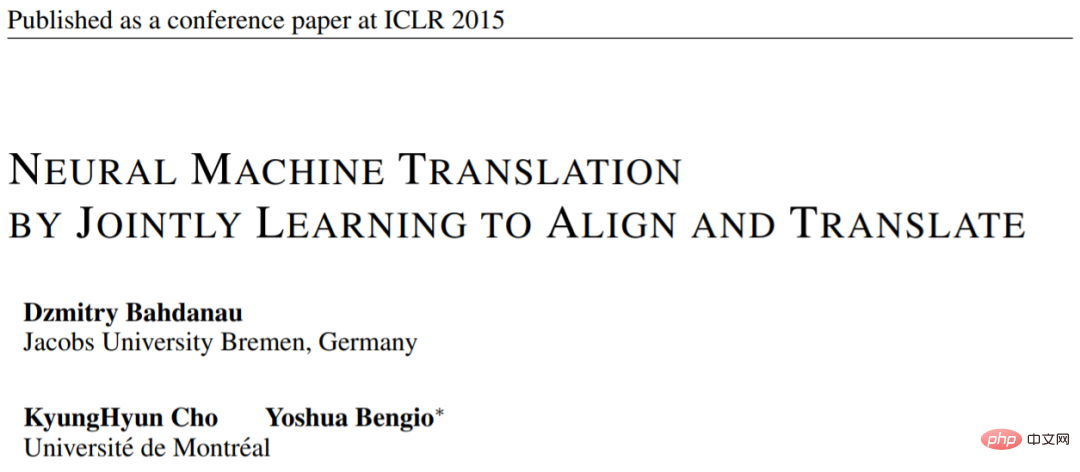
Paper address: https:// arxiv.org/pdf/1409.0473.pdf
This article introduces a recurrent neural network (RNN) attention mechanism to improve the model's long-range sequence modeling capabilities. This enables RNNs to more accurately translate longer sentences - the motivation behind the development of the original Transformer architecture.

Image source: https://arxiv.org/abs/1409.0473
Paper 2: "Attention Is All You Need 》
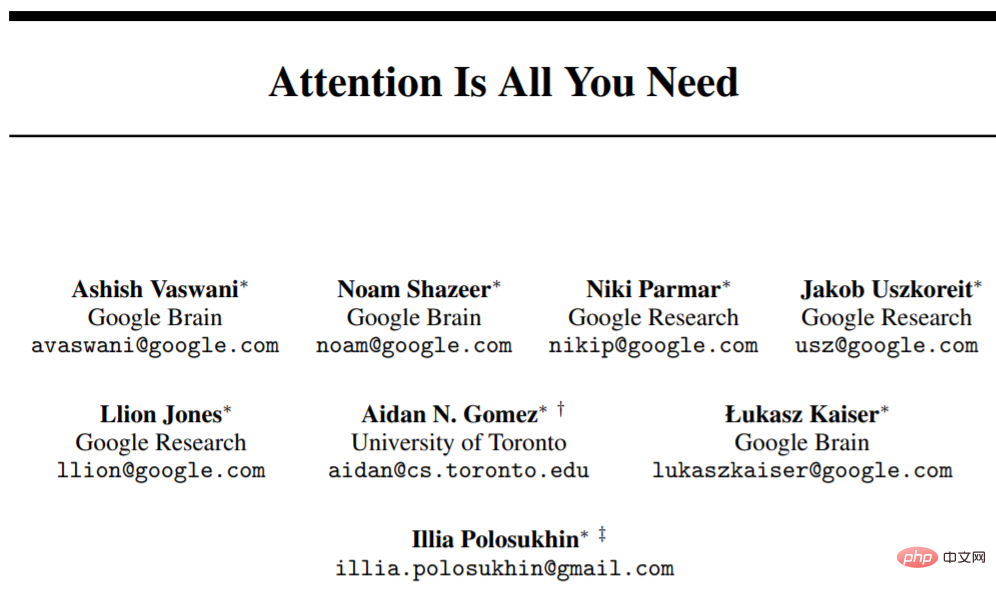
Paper address: https://arxiv.org/abs/1706.03762
This article introduces the composition of encoder and decoder The original Transformer architecture, these parts will be introduced as separate modules later. In addition, this article introduces concepts such as scaling dot product attention mechanisms, multi-head attention blocks, and positional input encoding, which are still the foundation of modern Transformers.
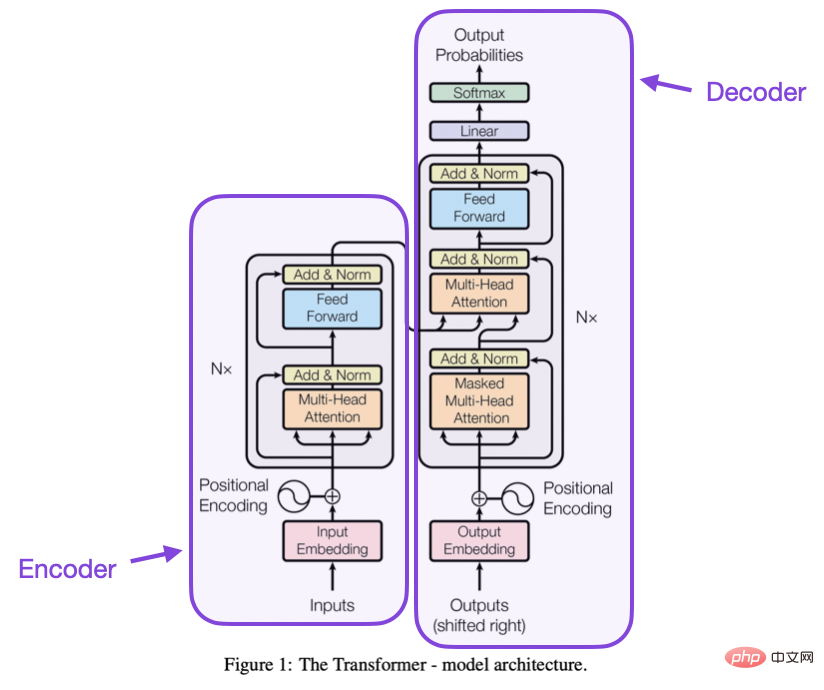
Source: https://arxiv.org/abs/1706.03762
Paper 3: "BERT: Pre-training of Deep Bidirectional Transformers for Language Understanding》

Paper address: https://arxiv.org/abs/1810.04805
Large-scale language model research followed the initial Transformer architecture and then began to extend in two directions: Transformer for predictive modeling tasks (such as text classification) and Transformer for generative modeling tasks (such as translation, summarization, and other forms of text creation) Transformer.
The BERT paper introduces the original concept of masked language modeling. If you are interested in this research branch, you can follow up with RoBERTa, which simplifies the pre-training objectives.
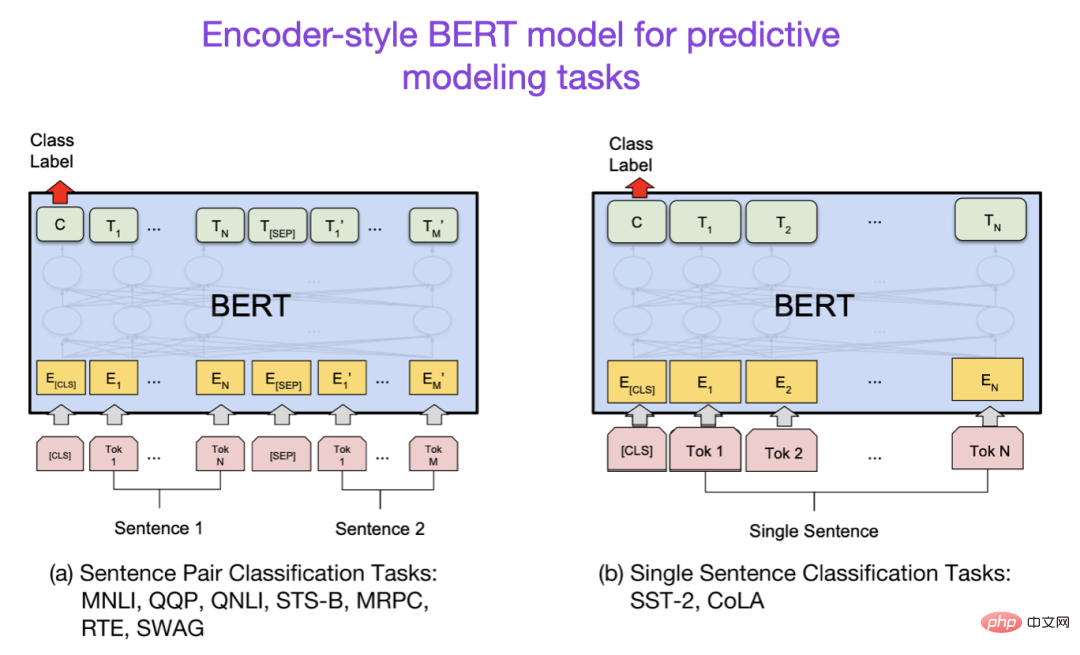
Image source: https://arxiv.org/abs/1810.04805
Paper 4: "Improving Language Understanding by Generative Pre-Training》

Paper address: https://www.semanticscholar.org/paper/Improving-Language-Understanding-by-Generative- Radford-Narasimhan/cd18800a0fe0b668a1cc19f2ec95b5003d0a5035
The original GPT paper introduced the popular decoder-style architecture and pre-training with next word prediction. BERT can be considered a two-way Transformer due to its masked language model pre-training goal, while GPT is a one-way autoregressive model. Although GPT embeddings can also be used for classification, GPT methods are at the core of today's most influential LLMs such as ChatGPT.
If you are interested in this research branch, you can follow up on the GPT-2 and GPT-3 papers. In addition, this article will introduce the InstructGPT method separately later.

Paper 5: "BART: Denoising Sequence-to-Sequence Pre-training for Natural Language Generation, Translation, and Comprehension"

Paper address https://arxiv.org/abs/1910.13461.
As mentioned above, BERT-type encoder-style LLM is usually the first choice for predictive modeling tasks, while GPT Decoder-style LLMs are better at generating text. To get the best of both worlds, the BART paper above combines the encoder and decoder parts.
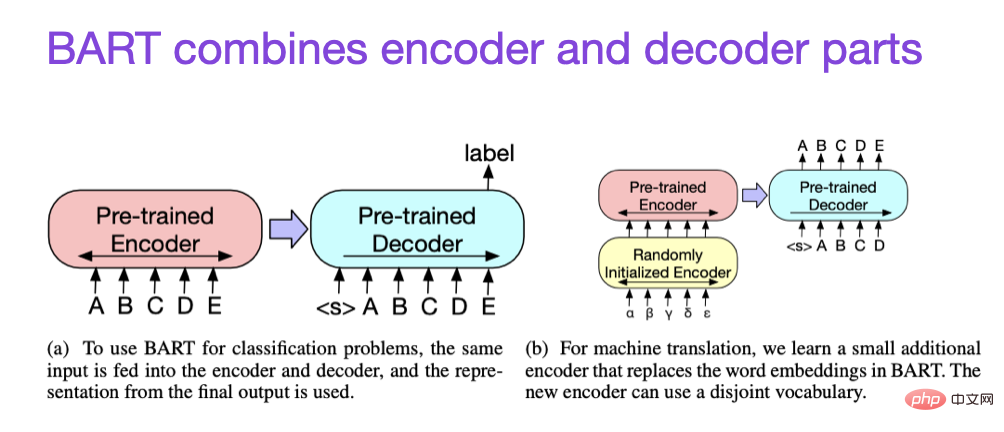
Expansion Law and Efficiency Improvement
If you want to know more about techniques to improve Transformer efficiency, you can refer to the following papers
- Paper 1: "A Survey on Efficient Training of Transformers"
- Paper address: https://arxiv.org/abs/2302.01107
- Paper 2: "FlashAttention: Fast and Memory-Efficient Exact Attention with IO-Awareness"
- Paper address: https://arxiv.org/abs/2205.14135
- Paper 3: "Cramming: Training a Language Model on a Single GPU in One Day"
- Paper address: https://arxiv .org/abs/2212.14034
- Paper 4: "Training Compute-Optimal Large Language Models"
- Paper address: https: //arxiv.org/abs/2203.15556
In addition, there is also the paper "Training Compute-Optimal Large Language Models"
Paper address: https://arxiv.org/abs /2203.15556
This article introduces the 70 billion parameter Chinchilla model, which outperforms the popular 175 billion parameter GPT-3 model on generative modeling tasks. However, its main highlight is that contemporary large-scale language models are severely undertrained.
This article defines linear scaling law for large language model training. For example, although Chinchilla is half the size of GPT-3, it outperforms GPT-3 because it is trained on 1.4 trillion (instead of 300 billion) tokens. In other words, the number of training tokens is as important as the model size.
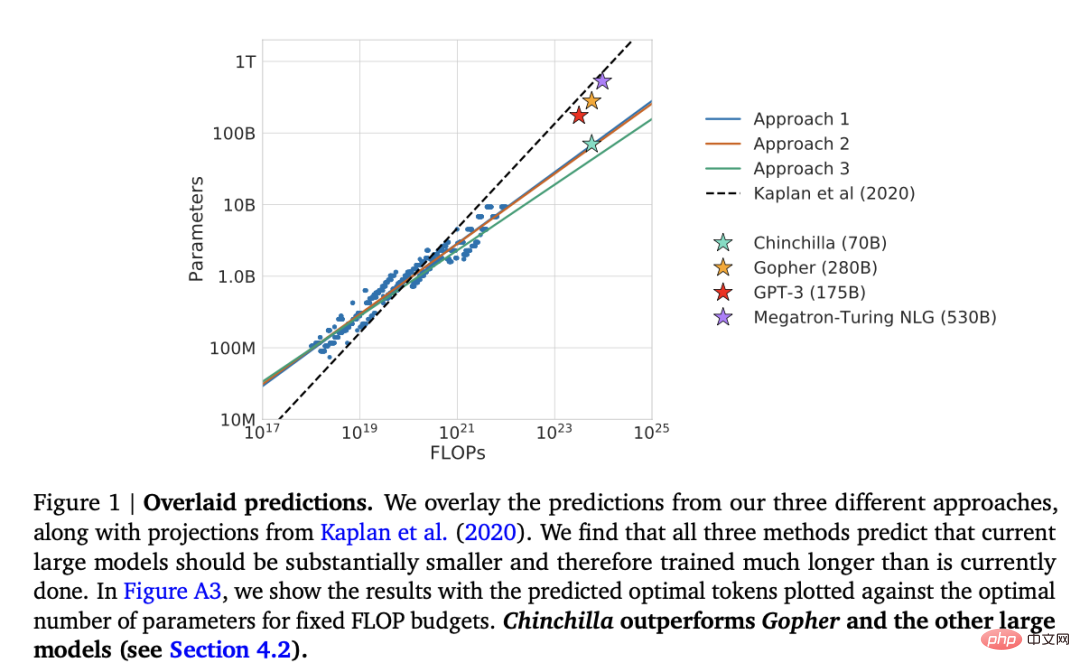
Alignment - guiding large language models toward desired goals and interests
In recent years, many relatively powerful methods have emerged Large language models that can generate real text (e.g. GPT-3 and Chinchilla). In terms of commonly used pre-training paradigms, it seems that an upper limit has been reached.
In order to make the language model more helpful to humans and reduce misinformation and bad language, researchers have designed additional training paradigms to fine-tune the pre-trained basic model, including the following papers.
- Paper 1: "Training Language Models to Follow Instructions with Human Feedback"
- Paper address: https://arxiv.org/abs/2203.02155
In this so-called InstructGPT paper, researchers used RLHF (Reinforcement Learning from Human Feedback). They started with a pretrained GPT-3 base model and further fine-tuned it on human-generated cue-response pairs using supervised learning (step 1). Next, they asked humans to rank the model outputs to train the reward model (step 2). Finally, they use the reward model to update the pretrained and fine-tuned GPT-3 model using reinforcement learning via proximal policy optimization (step 3).
By the way, this paper is also known as the paper that describes the ideas behind ChatGPT - according to recent rumors, ChatGPT is an extended version of InstructGPT that is fine-tuned on a larger dataset.
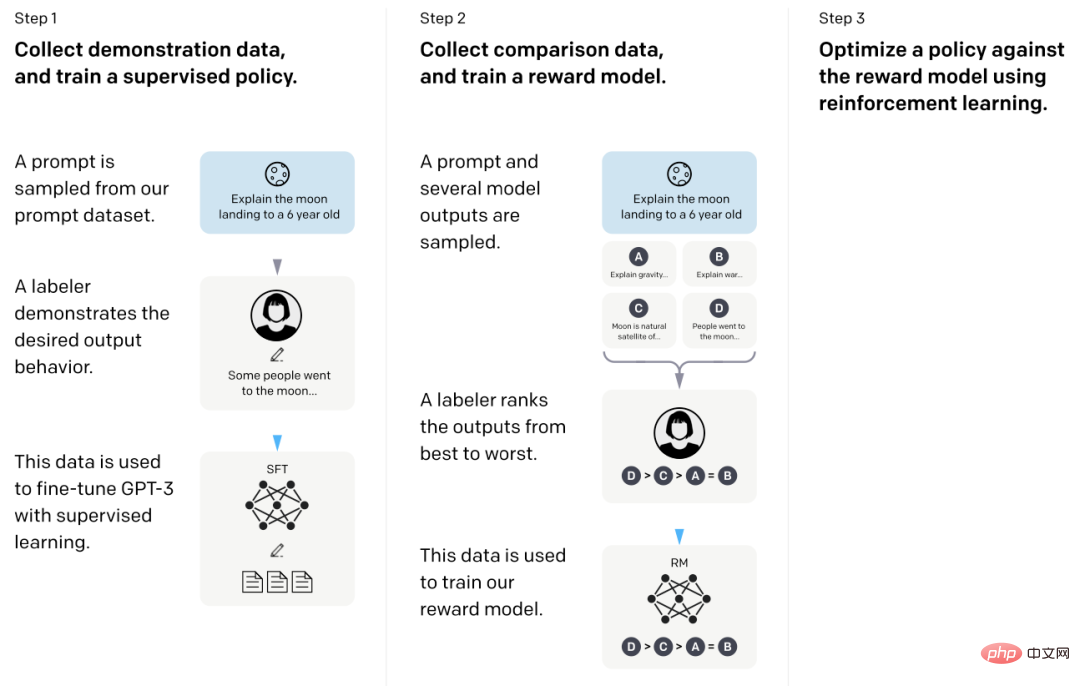
- Paper 2: "Constitutional AI: Harmlessness from AI Feedback"
- Paper address: https://arxiv.org/abs/2212.08073
In this article In the paper, the researchers further advance the idea of alignment and propose a training mechanism to create a "harmless" AI system. The researchers proposed a self-training mechanism based on a list of rules (provided by humans), rather than direct human supervision. Similar to the InstructGPT paper mentioned above, the proposed method uses reinforcement learning methods.
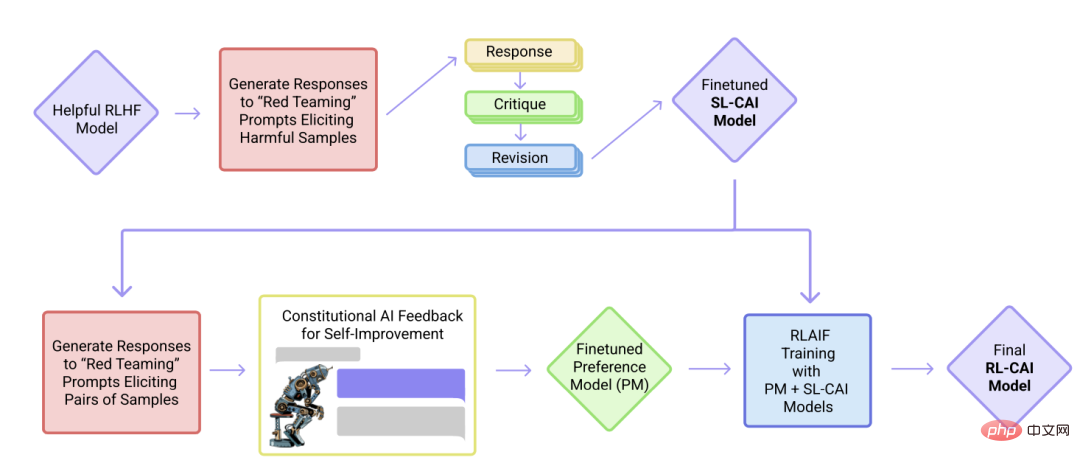
Summary
This article tries to keep the arrangement of the form above as simple and beautiful as possible. It is recommended to focus on the first 10 papers to understand the ideas behind contemporary large-scale language models. Design, limitations and evolution.
If you want to read in depth, it is recommended to refer to the references in the above paper. Alternatively, here are some additional resources for readers to explore further:
Open Source Alternatives to GPT
- Paper 1: "BLOOM: A 176B-Parameter Open-Access Multilingual Language Model》
- Paper address: https://arxiv.org/abs/2211.05100
- Paper 2 : "OPT: Open Pre-trained Transformer Language Models"
- Paper address: https://arxiv.org/abs/2205.01068
ChatGPT alternative
- Paper 1 "LaMDA: Language Models for Dialog Applications"
- Paper address: https://arxiv.org/abs/2201.08239
- Paper 2: "Improving alignment of dialogue agents via targeted human judgments"
- Paper address: https://arxiv.org/abs/2209.14375
- Paper 3: "BlenderBot 3: a deployed conversational agent that continually learns to responsibly engage"
- Paper address: https://arxiv. org/abs/2208.03188
Large-scale language models in computational biology
- Paper 1: "ProtTrans: Towards Cracking the Language of Life's Code Through Self-Supervised Learning》
- Paper address: https://arxiv.org/abs/2007.06225
- Paper 2: "Highly accurate protein structure prediction with AlphaFold"
- Paper address: https://www.nature.com/articles/s41586-021-03819-2
- Paper 3: "Large Language Models Generate Functional Protein Sequences Across Diverse Families"
- Paper address: https://www.nature.com/articles/s41587-022-01618- 2
The above is the detailed content of For a comprehensive understanding of large language models, here is a reading list. For more information, please follow other related articles on the PHP Chinese website!

Hot AI Tools

Undresser.AI Undress
AI-powered app for creating realistic nude photos

AI Clothes Remover
Online AI tool for removing clothes from photos.

Undress AI Tool
Undress images for free

Clothoff.io
AI clothes remover

Video Face Swap
Swap faces in any video effortlessly with our completely free AI face swap tool!

Hot Article

Hot Tools

Notepad++7.3.1
Easy-to-use and free code editor

SublimeText3 Chinese version
Chinese version, very easy to use

Zend Studio 13.0.1
Powerful PHP integrated development environment

Dreamweaver CS6
Visual web development tools

SublimeText3 Mac version
God-level code editing software (SublimeText3)

Hot Topics
 1386
1386
 52
52
 How to solve the complexity of WordPress installation and update using Composer
Apr 17, 2025 pm 10:54 PM
How to solve the complexity of WordPress installation and update using Composer
Apr 17, 2025 pm 10:54 PM
When managing WordPress websites, you often encounter complex operations such as installation, update, and multi-site conversion. These operations are not only time-consuming, but also prone to errors, causing the website to be paralyzed. Combining the WP-CLI core command with Composer can greatly simplify these tasks, improve efficiency and reliability. This article will introduce how to use Composer to solve these problems and improve the convenience of WordPress management.
 How to solve SQL parsing problem? Use greenlion/php-sql-parser!
Apr 17, 2025 pm 09:15 PM
How to solve SQL parsing problem? Use greenlion/php-sql-parser!
Apr 17, 2025 pm 09:15 PM
When developing a project that requires parsing SQL statements, I encountered a tricky problem: how to efficiently parse MySQL's SQL statements and extract the key information. After trying many methods, I found that the greenlion/php-sql-parser library can perfectly solve my needs.
 How to solve complex BelongsToThrough relationship problem in Laravel? Use Composer!
Apr 17, 2025 pm 09:54 PM
How to solve complex BelongsToThrough relationship problem in Laravel? Use Composer!
Apr 17, 2025 pm 09:54 PM
In Laravel development, dealing with complex model relationships has always been a challenge, especially when it comes to multi-level BelongsToThrough relationships. Recently, I encountered this problem in a project dealing with a multi-level model relationship, where traditional HasManyThrough relationships fail to meet the needs, resulting in data queries becoming complex and inefficient. After some exploration, I found the library staudenmeir/belongs-to-through, which easily installed and solved my troubles through Composer.
 Solve CSS prefix problem using Composer: Practice of padaliyajay/php-autoprefixer library
Apr 17, 2025 pm 11:27 PM
Solve CSS prefix problem using Composer: Practice of padaliyajay/php-autoprefixer library
Apr 17, 2025 pm 11:27 PM
I'm having a tricky problem when developing a front-end project: I need to manually add a browser prefix to the CSS properties to ensure compatibility. This is not only time consuming, but also error-prone. After some exploration, I discovered the padaliyajay/php-autoprefixer library, which easily solved my troubles with Composer.
 How to solve the problem of PHP project code coverage reporting? Using php-coveralls is OK!
Apr 17, 2025 pm 08:03 PM
How to solve the problem of PHP project code coverage reporting? Using php-coveralls is OK!
Apr 17, 2025 pm 08:03 PM
When developing PHP projects, ensuring code coverage is an important part of ensuring code quality. However, when I was using TravisCI for continuous integration, I encountered a problem: the test coverage report was not uploaded to the Coveralls platform, resulting in the inability to monitor and improve code coverage. After some exploration, I found the tool php-coveralls, which not only solved my problem, but also greatly simplified the configuration process.
 How to solve PHP's phar://stream processing security problem? Use typo3/phar-stream-wrapper!
Apr 17, 2025 pm 08:24 PM
How to solve PHP's phar://stream processing security problem? Use typo3/phar-stream-wrapper!
Apr 17, 2025 pm 08:24 PM
I'm having a serious problem when dealing with a PHP project: There is a security vulnerability in phar://stream processing, which can lead to the execution of malicious code. After some research and trial, I found an effective solution - using the typo3/phar-stream-wrapper library. This library not only solves my security issues, but also provides a flexible interceptor mechanism, making managing phar files more secure and controllable.
 How to solve the complex problem of PHP geodata processing? Use Composer and GeoPHP!
Apr 17, 2025 pm 08:30 PM
How to solve the complex problem of PHP geodata processing? Use Composer and GeoPHP!
Apr 17, 2025 pm 08:30 PM
When developing a Geographic Information System (GIS), I encountered a difficult problem: how to efficiently handle various geographic data formats such as WKT, WKB, GeoJSON, etc. in PHP. I've tried multiple methods, but none of them can effectively solve the conversion and operational issues between these formats. Finally, I found the GeoPHP library, which easily integrates through Composer, and it completely solved my troubles.
 How to solve the problem of virtual columns in Laravel model? Use stancl/virtualcolumn!
Apr 17, 2025 pm 09:48 PM
How to solve the problem of virtual columns in Laravel model? Use stancl/virtualcolumn!
Apr 17, 2025 pm 09:48 PM
During Laravel development, it is often necessary to add virtual columns to the model to handle complex data logic. However, adding virtual columns directly into the model can lead to complexity of database migration and maintenance. After I encountered this problem in my project, I successfully solved this problem by using the stancl/virtualcolumn library. This library not only simplifies the management of virtual columns, but also improves the maintainability and efficiency of the code.



